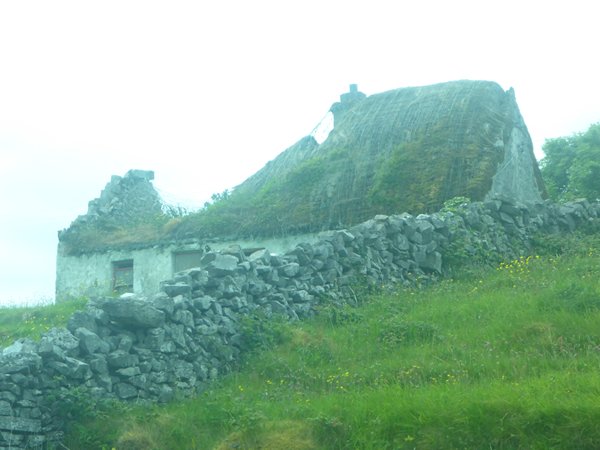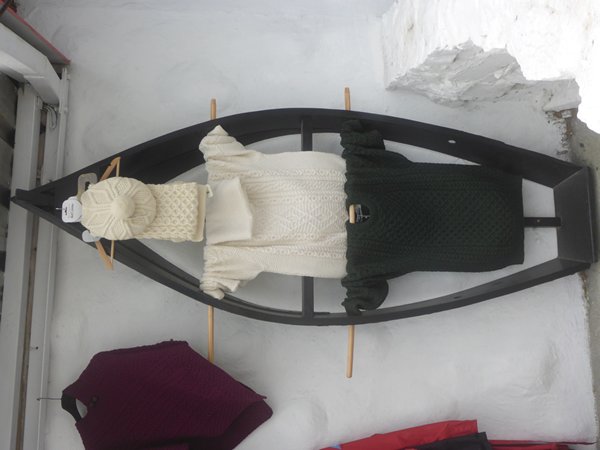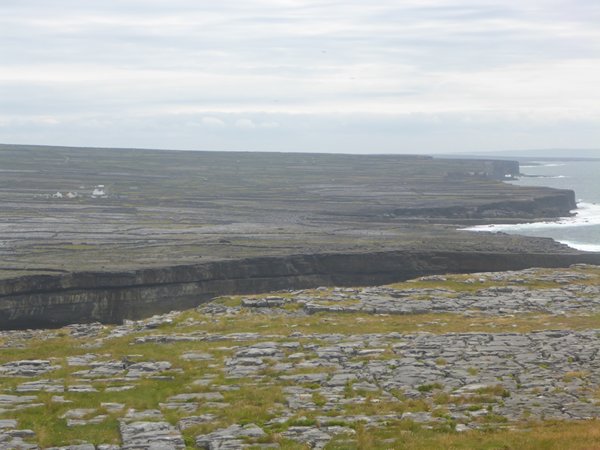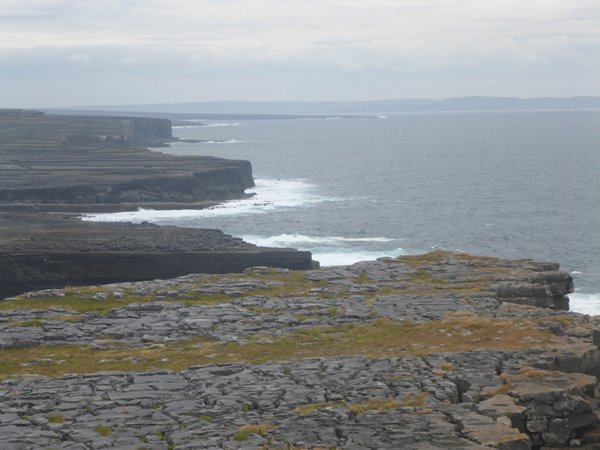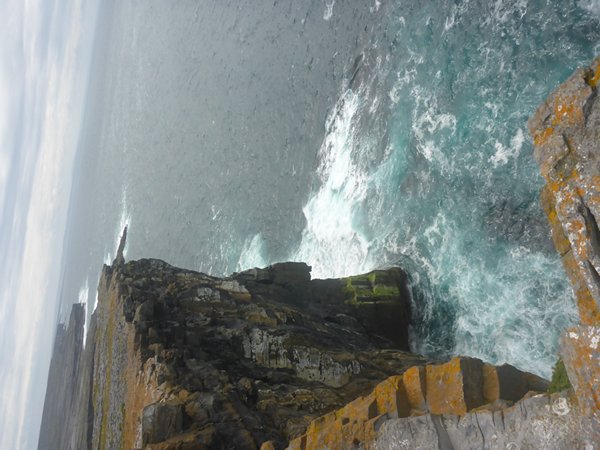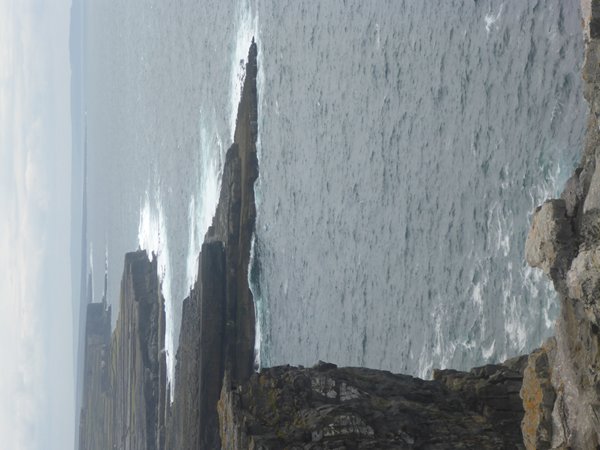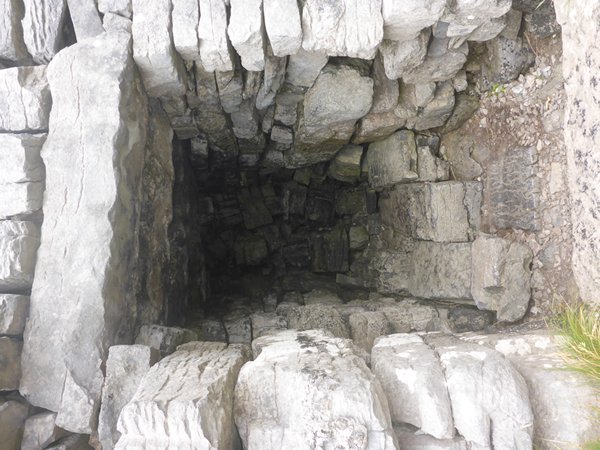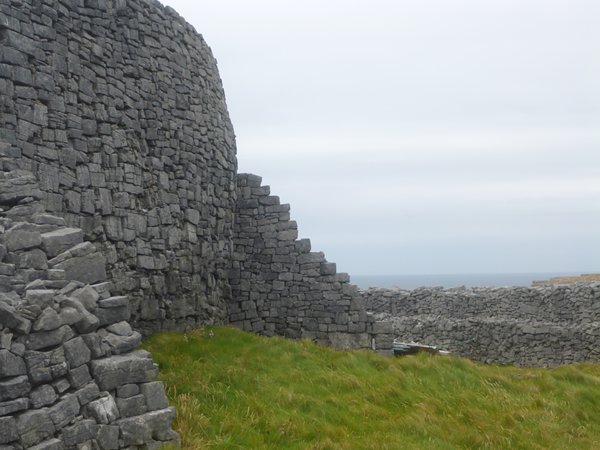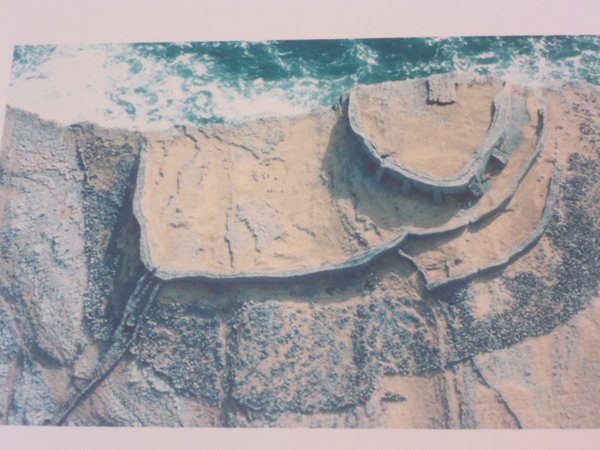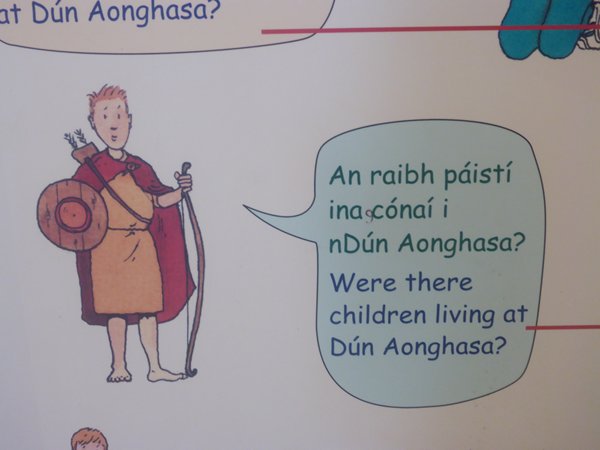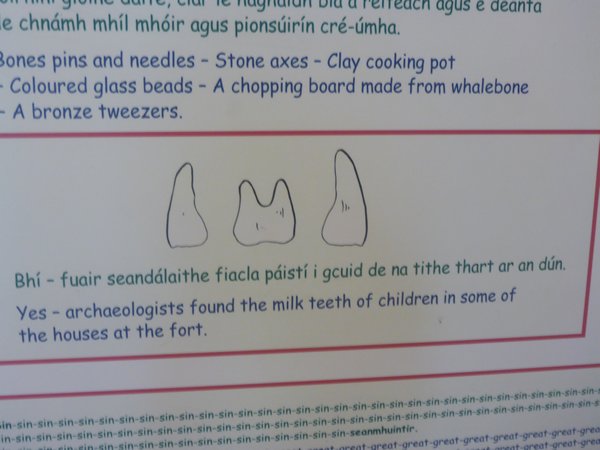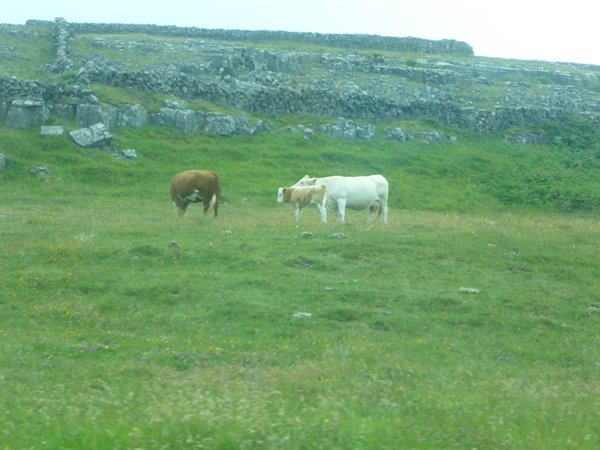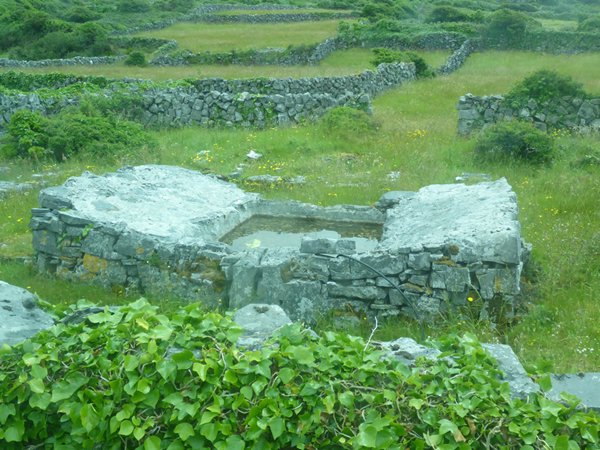The Aran Islands

53:06.93N 9:40.05W
Inis Mór and her Little Sisters Inis Meáin and Inis Oír
It is hard to know where to start in telling you about these three well-connected sister islands, collectively know as the Aran Islands and most likely best known to many as the source of the beautifully designed and knitted merino woollen clothes that sell all over the world, keeping people warm and stylish at the same time. These garments are born of the wild climate and the need for protection and of the human mind telling the seafaring story of the hardy islanders in the form of the curving and twisting rope or cable stitch symbolising the fishermen’s’ ropes and the diamond stitch representing the rope shapes made by their fishing nets and the hope for wealth and success to name two of the many.
North of the Shannon River we are now in truly Gaelic country and the Gaeltacht language is being spoken all around us. When we share a specific location also visited by tourists we hear a variety of languages and just occasionally English, it’s fun being foreign so close to home.
Man is known to have been a driving force on the islands since 1100 BC but going back to their beginnings the area which includes much of County Clare on the mainland is known as The Burren where layers of mud, silt and dark sand containing all manner of dead sea-life were laid down at the bottom of a tropical sea 350 million years ago and over eons of time became limestone rock. Subsequent movement of the earth’s surface and numerous grinding and smoothing phases by glaciers have resulted in what geologists consider to be some of the finest examples of glacio-karst landscape in the world.
The limestone fields that we saw on Inis Meáin as we sailed through Gregory Sound amongst bobbing flocks of guillemots are the resulting hard surfaces that look as if they would defy any human attempt to farm them. So, in humankind’s signature talent for adaption, seaweed and sand have been hauled by the cartload and through the last millennia from the shore to the fields to make soil to support the tribes of the past.
It was hard to imagine the abundant history of these islands when we arrived, tired, hungry, thirsty for a gin and immensely appreciative of the broad and well-sheltered naturally formed Killeany Bay, with no swell at all and protected from the persistent westerly wind, but since then we have learned a lot and are impressed.
As I mentioned these lovely islands are well connected with each other and the mainland with underwater cables, frequent ferry and light plane schedules, small cargo ships for resident’s vehicles and heavy goods, and satellite communications and one of the main attractions on Inis Mór is the spectacular hill fort Dún Aonghasa located on the sheer edge of the cliff face and in occupation from 1100 BC. I was desperate to pay it a visit.
Today the fort is around 100 metres above the ocean but 3000 years ago the sea level was much lower, also it is because of erosion that the cliff face has moved towards its present location. Originally the fought was possibly some 1000 metres back from the cliff edge. I would have been happy to have lived there then, but not now.
Round stone beehive homes were one form of durable dwelling and interlocking long houses with thatch or woven roofs were located within the stone walls. Some butted against the stonework and recesses clearly visible today within the walls would have served as cupboards within the homes.
Much restoration work has been done to preserve the fort and 20th century stone buttresses were built to prevent the inner wall from collapsing.
The views along the cliff edge were stunning and I was constantly on edge, mentally, definitely not physically, as braver people teetered as close as they could for their pictures.
There are four rings of stone encasing the fort and between the third and fourth is a band of jagged rocks, some natural and others ‘planted’ that form the Chevaux de Frise, an obvious defence barrier against cavalry.
The chevaux that stood tethered to their carts below the fort looked unlikely to reach a trot let alone a full gallop towards a stone fort. They were one means of getting around the island and carting goods in time not so long ago. Another in common usage now is bikes, bikes by the hundred if not thousand rented out to energetic visitors. I felt mentally but not physically inclined so when Mike stood beside his minivan at the side of the quay in Kilronan touting his guided tour of his birthplace he had two very eager participants.
The first photo was his old home and the second his new abode (I think he was joking….but maybe not) and the slit in the stone wall is the well from which his family took their water before the island was plumbed into the national grid. His dad was the last butcher on the island and up until quite recently in the long timespan of human activity the islanders were self sufficient for food. The size of the fields depended on the abundance of stone that had to be cleared to make space for farming. The more rock the smaller the fields. There are still plenty of small groups of cattle and sheep but little sign of horticulture. I guess a day out to Supa Value on the mainland is more fun.
The population of the islands has decreased over the years, a good education opening up the world to youngsters for whom a hard life of survival would not appeal. But the diverse character of these remote but easily accessible places brings an abundance of tourists which itself provides some valuable jobs and I have no doubt that many of the residents who have worked abroad will return as some stage to the more peaceful, simple life.
There is an ongoing thread of rich culture on the islands. I have mentioned the poets, authors and musicians before but do you remember Father Ted? Well Craggy Island is a fictional place based quite firmly on these islands even though the house in the middle of the field one sees at the start of each of the 25 episodes is in fact located near the Burren National Park in County Clare on the mainland. Every year in March the Ted Fest is held at the Aran Islands Hotel on Inis Mór and 2022 was no exception. Included in the antics are Matchmaking with Nellie, the Priests Dance Off, the Father Ted Prizeless Quiz, bet that’s popular and the Craggy Cup. Participants are amply sustained with tea and sandwiches (!) and plans for next year are well underway. You can book online! Sadly, we arrived three months too late!
From Dynasties and Kingdoms to the Craggy Cup. It could only be Ireland.
